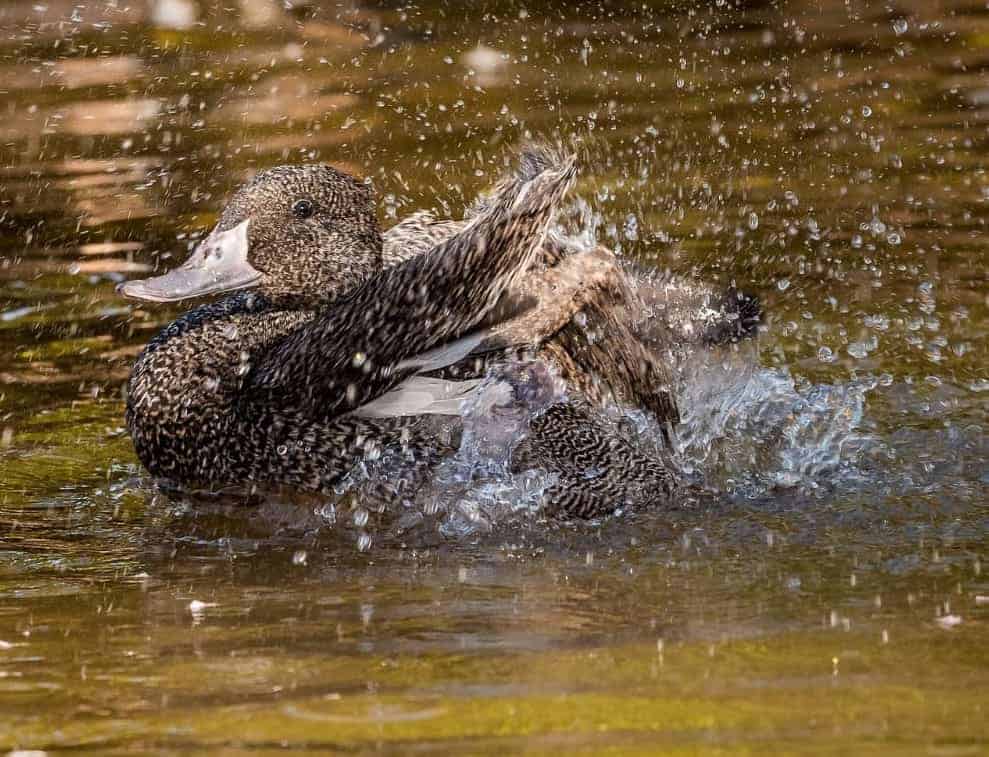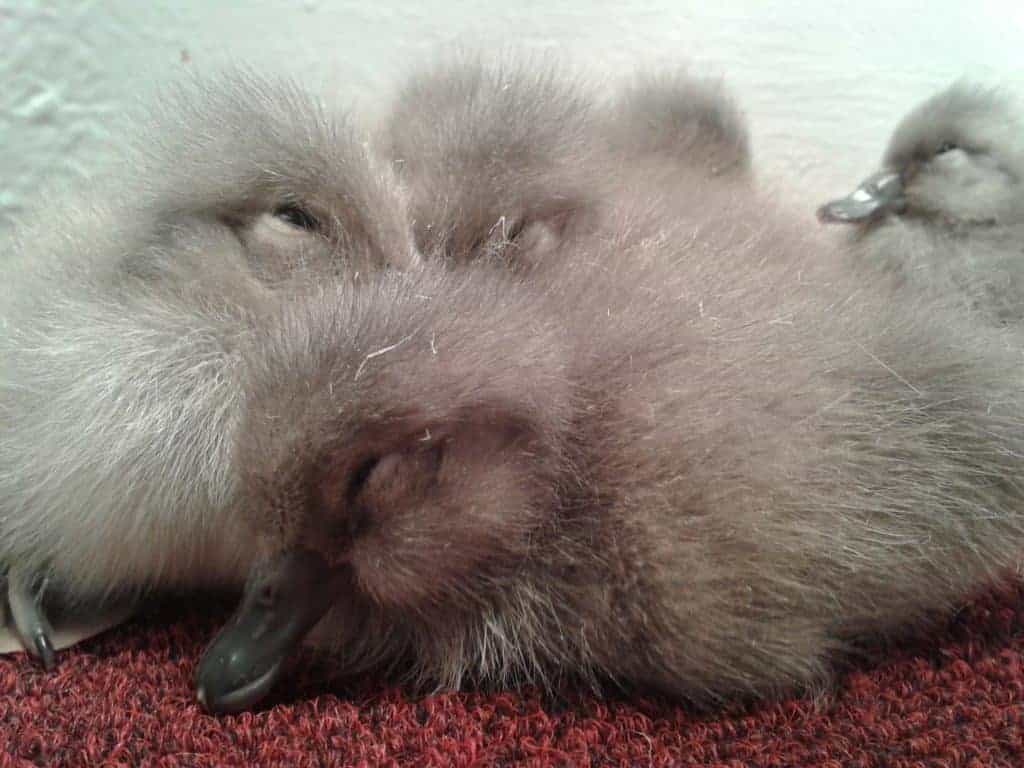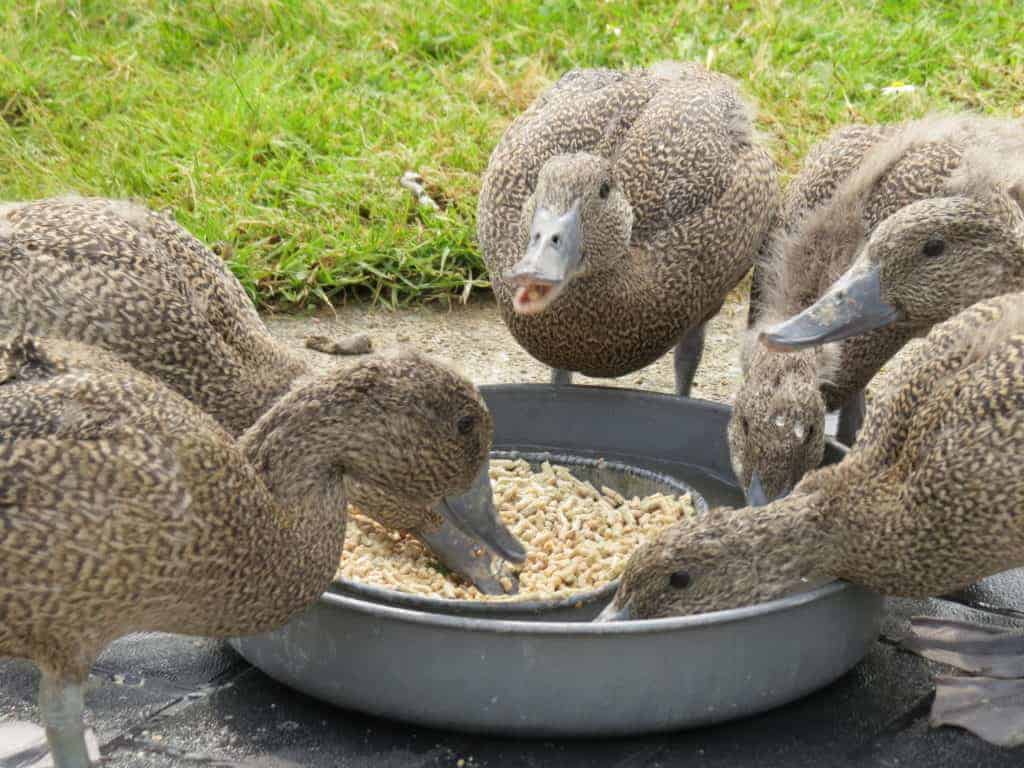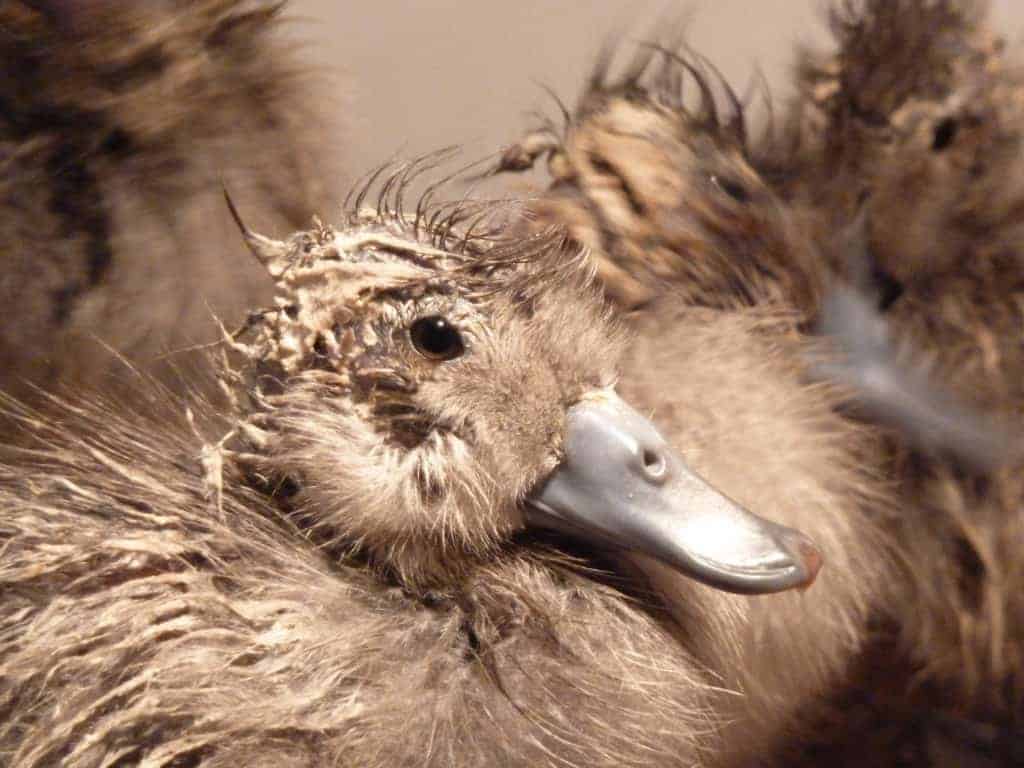Freckled Duck

In aviculture, Freckled Ducks are best kept in their own enclosure. They are a species that hates change, and you have to be so sensitive with their welfare. They are flighty and easily put off breeding by other species, but will cope with those they have known since their juvenile period. If they meet a bird, pair or species that they don’t like they can just sit in the corner, hoping that they’ll go away. Once in the habit of breeding, unrelated young may be killed by a brooding mother, then, once her own ducklings are independant at 5-6 weeks she might turn on them if she prepares to breed again.

Stictonetta naevosa
The Freckled Duck is Australia’s rarest member of the Anatidae. It breeds on inland swamps, when these areas dry out in the summer months, the ducks are forced to disperse towards coastal and subcoastal wetlands.
Favoured nest sites include reedbeds and bushes at the water’s edge. They will form a deep nest of woven reeds or twigs and line it with down.

Freckled Ducks are filter feeders, both from the surface and muddy bottoms, so they are seen dabbling and upending in the shallows. Their varied diet includes algae, seeds, aquatic plants and grasses; invertebrates and their larvae, sponges and tiny fish.

Freckled Ducks start breeding at two years old. 5-10 (more if dump nesting) ivory or pale creamy brown eggs are incubated for 26-30 days. The duck raises her clutch alone and will vigorously defend her young. Artificial brooding is a messy business. You can immediately tell when the Freckled Ducks have learnt to feed, because they will be wearing it. Much like shoveler and other filter feeders, Freckled ducklings will suck up a beak full of water and spit it and mix it into their chick crumb to make a porridge.